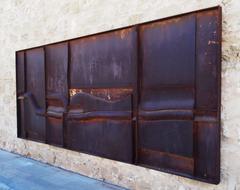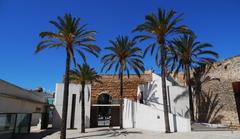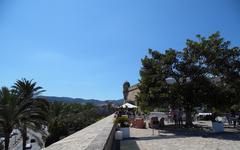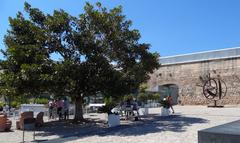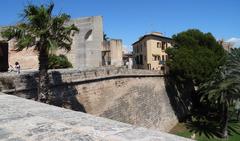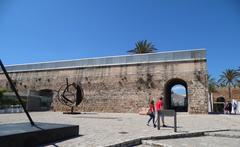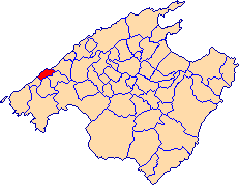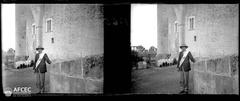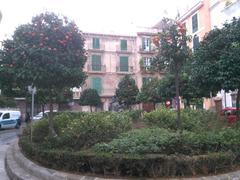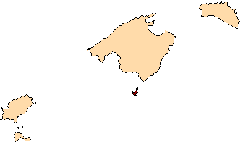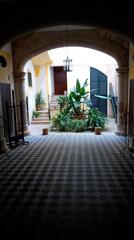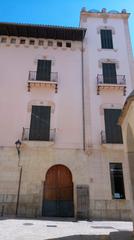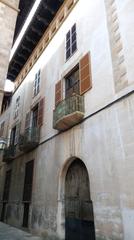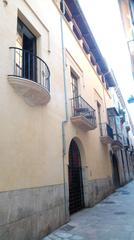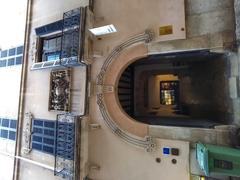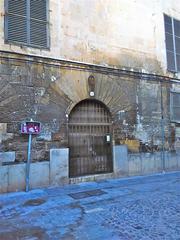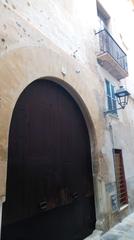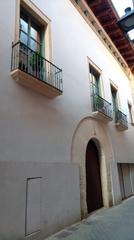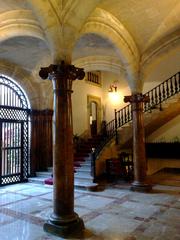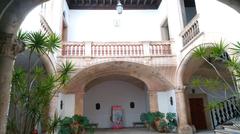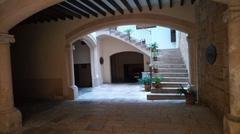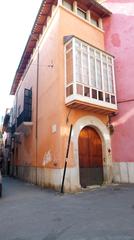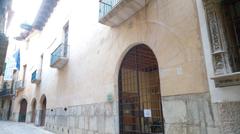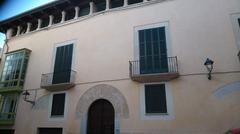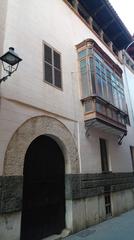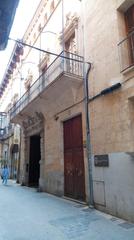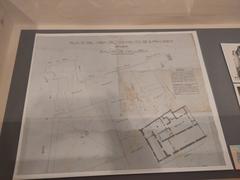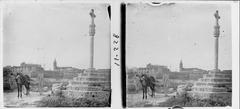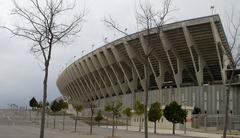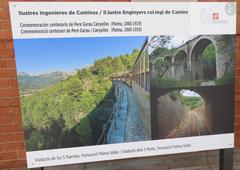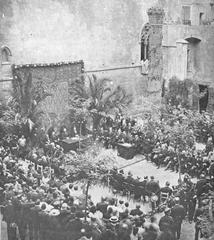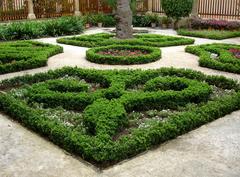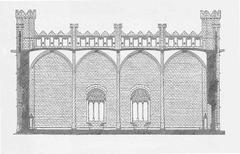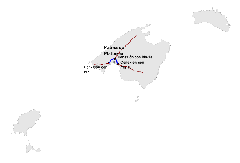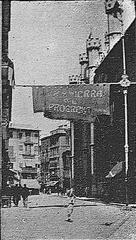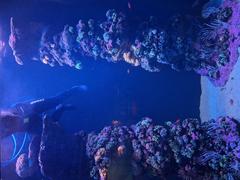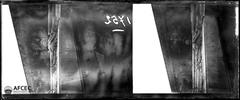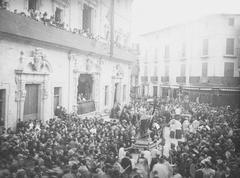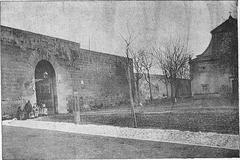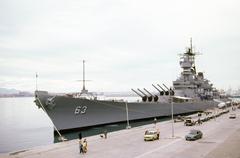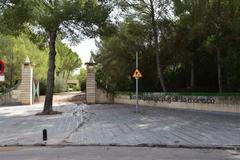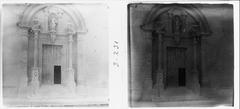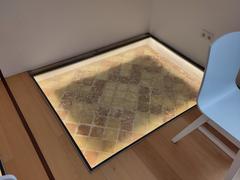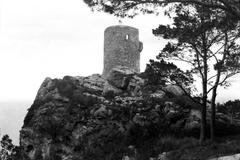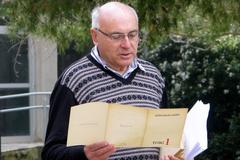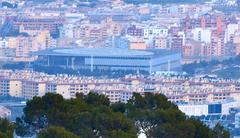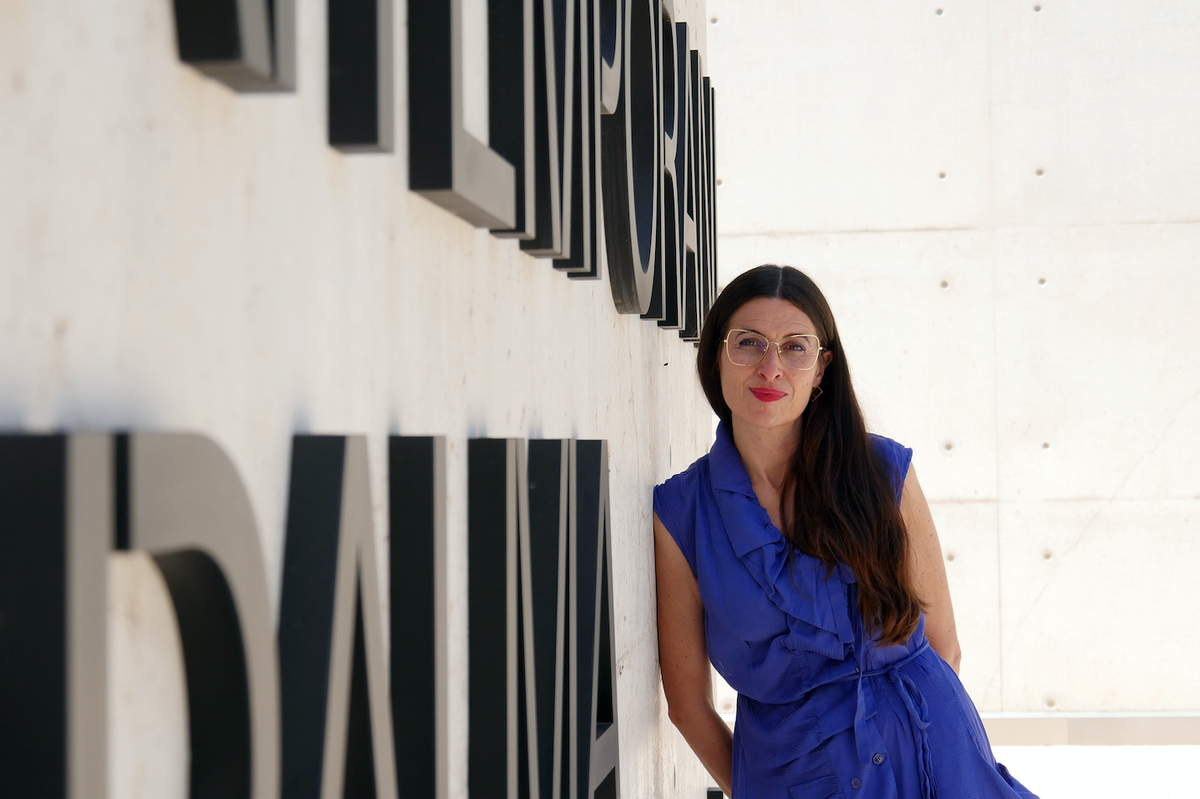
Visiting Es Baluard: Hours, Tickets, and Tips
Date: 23/07/2024
Introduction
Es Baluard, located in Palma de Mallorca, Spain, is a premier museum of modern and contemporary art that merges historical architecture with cutting-edge artistic expression. Nestled within the historic Baluard de Sant Pere fortress, Es Baluard not only showcases an impressive array of artworks but also embodies the rich historical tapestry of Palma de Mallorca. The fortress, originally constructed in the 16th century under the reign of King Philip II to defend against pirate attacks and military invasions, has undergone significant transformations. From its military origins to its current status as a cultural landmark, Es Baluard offers visitors an immersive experience that bridges the past and the present (Es Baluard History). This comprehensive guide provides detailed information on the museum’s history, visitor tips, and its cultural significance, making it an essential resource for anyone planning to explore this remarkable site.
Table of Contents
- Introduction
- Origins and Construction
- Military Significance
- Transition to Civil Use
- Establishment of Es Baluard Museum
- Architectural Renovation
- Visitor Information
- Nearby Attractions and Travel Tips
- Cultural Impact
- Preservation and Future Prospects
- FAQ Section
- Conclusion
Origins and Construction
Es Baluard traces its origins back to the 16th century when the Kingdom of Spain, under King Philip II, initiated the construction of defensive structures to protect the island from pirate attacks and military invasions. The fortress, known as Baluard de Sant Pere, was completed in 1578 and was influenced by Renaissance military architecture, characterized by its robust bastions and strategic positioning (Es Baluard History).
Military Significance
Throughout its history, Baluard de Sant Pere played a crucial role in the defense of Palma de Mallorca. The fortress oversaw and protected the port of Palma, a vital point for trade and military operations. During the War of Spanish Succession (1701-1714), it served as a key defensive position for the Bourbon forces (War of Spanish Succession).
Transition to Civil Use
In the 19th century, with new military technologies and changes in warfare, the fortress gradually lost its strategic importance. By the early 20th century, it had fallen into disuse. Recognizing its historical and architectural significance, local authorities declared it a Cultural Heritage Site in 1963, ensuring its protection and paving the way for its future transformation (Cultural Heritage Site).
Establishment of Es Baluard Museum
The idea to convert the fortress into a museum emerged in the late 20th century, aiming to create a cultural space celebrating both the historical significance of the fortress and the contemporary art scene of the Balearic Islands. The museum officially opened on January 30, 2004, following a collaborative effort involving local government, private sponsors, and cultural institutions (Es Baluard Opening).
Architectural Renovation
Renowned architect Lluís García-Ruiz led the complex and meticulous renovation project, preserving the historical integrity of the fortress while integrating contemporary design elements. The renovation included new exhibition spaces, restoration of the original bastions, and the creation of a central courtyard, blending the old with the new (Architectural Renovation).
Visitor Information
Visiting Hours: Es Baluard is open from Tuesday to Saturday, 10:00 AM to 8:00 PM, and on Sundays from 10:00 AM to 3:00 PM. It is advisable to check the official website for any changes or special holiday hours.
Tickets: General admission tickets are €6, with reduced rates of €4 for students, seniors, and groups. Free admission is often offered for children under 12, members of the International Council of Museums (ICOM), and on Fridays from 3:00 PM to 8:00 PM (Ticket Information).
Accessibility: The museum is equipped with ramps and elevators to ensure accessibility for all visitors. Guided tours and educational programs are available in multiple languages (Accessibility Information).
Nearby Attractions and Travel Tips
Located in the heart of Palma de Mallorca, Es Baluard is near other historical sites, including the Palma Cathedral and the Royal Palace of La Almudaina. Visitors can enjoy a leisurely walk along the Paseo Marítimo or explore the vibrant local markets. Public transportation and parking facilities are conveniently available near the museum.
Cultural Impact
Since its opening, Es Baluard has become a cultural landmark, featuring works by renowned artists such as Pablo Picasso, Joan Miró, and Antoni Tàpies. It hosts diverse exhibitions, educational programs, and cultural events, attracting visitors globally and fostering cultural exchange (Es Baluard Collection).
Preservation and Future Prospects
The preservation of Es Baluard involves continuous maintenance and restoration projects. Future plans include expanding exhibition spaces, enhancing visitor facilities, and increasing engagement with the local and international art community (Future Prospects).
FAQ Section
What are the visiting hours for Es Baluard?
Es Baluard is open from Tuesday to Saturday, 10:00 AM to 8:00 PM, and on Sundays from 10:00 AM to 3:00 PM. Always check the official website for updates.
How much do tickets cost?
Ticket prices are €6 for general admission, with reduced rates of €4 for students, seniors, and groups. Free admission is offered on certain days or during special events.
Is the museum accessible?
Yes, the museum is fully accessible with ramps and elevators.
What nearby attractions can I visit?
Nearby attractions include the Palma Cathedral, Royal Palace of La Almudaina, and the Paseo Marítimo.
Conclusion
Es Baluard stands as a testament to Palma de Mallorca’s rich history and cultural heritage. From its origins as a military fortress to its transformation into a vibrant museum of modern and contemporary art, Es Baluard embodies the dynamic interplay between history and contemporary culture. The museum’s ongoing preservation efforts ensure that it will continue to inspire and engage visitors for generations to come (Es Baluard Collection, Future Prospects). Plan your visit today to explore this extraordinary convergence of history and art.
References
- Es Baluard History. Es Baluard Museum. https://www.esbaluard.org/en/museum/history/
- War of Spanish Succession. Britannica. https://www.britannica.com/event/War-of-the-Spanish-Succession
- Es Baluard Collection. Es Baluard Museum. https://www.esbaluard.org/en/collection/
- Future Prospects. Es Baluard Museum. https://www.esbaluard.org/en/museum/history/





